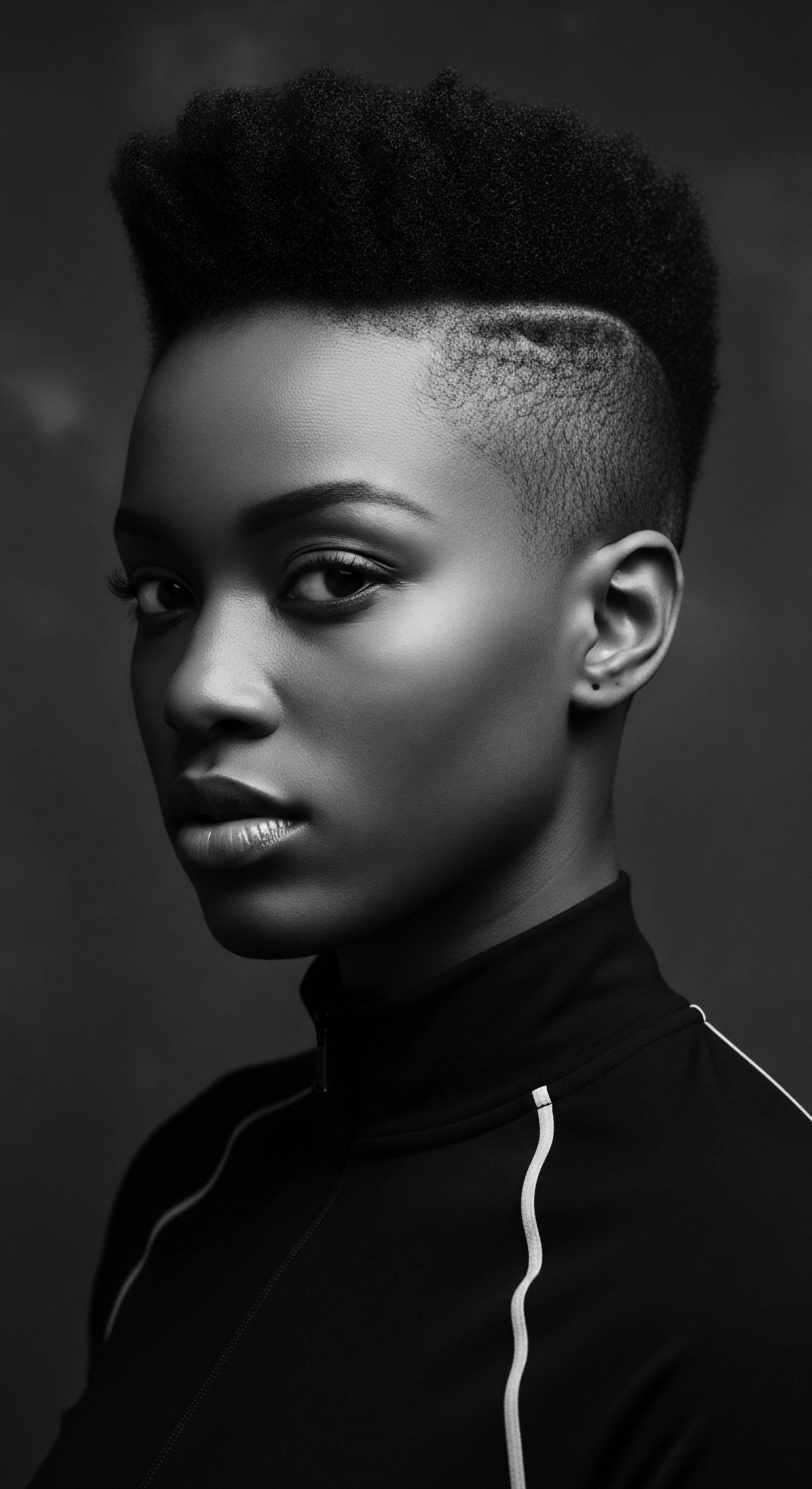
Roots
To stand at the precipice of inquiry, peering into the deep currents of history, is to recognize that hair, particularly textured hair, carries within its very structure the whispers of generations. It is more than mere keratin and pigment; it is a living archive, a narrative spun from the coils and kinks that have weathered the suns and storms of the human journey. When we ask if modern legislation holds the power to mend the ancient ruptures inflicted upon this precious hair heritage, we are not simply considering legal statutes.
We are contemplating whether law, a human construct, can touch the soul of a strand, tracing back to the primordial patterns that defined belonging, resistance, and beauty for countless forebears. This quest calls for a sensitivity that acknowledges the profound, often painful, legacy embedded within each curl and wave, for the spirit of repair must recognize the depth of what was lost, or, more accurately, what was forcibly denied.

Echoes from the Source The Genesis of Texture
The genesis of textured hair is a marvel of biological artistry, a testament to nature’s profound diversity. Its unique helical structure, ranging from broad waves to tightly wound coils, served as an ancient shield, protecting scalp and regulating temperature in diverse climates, particularly beneath the relentless gaze of the sun. This anatomical specificity also shaped foundational cultural practices, where hair was tended with purpose, adorned with intention, and revered as a conduit to the divine. Communities across the African continent developed sophisticated care systems, using ingredients drawn directly from the earth ❉ nourishing butters, restorative oils, and cleansing clays.
These practices were not incidental; they were expressions of collective wisdom, passed from elder to child, anchoring identity and strengthening communal bonds. The very shape of the hair strand dictated the care it required, creating a sacred reciprocity between human and biology that formed the bedrock of hair heritage.
The nomenclature surrounding textured hair, often perceived as a modern construct for classification, finds its parallel in these ancient understandings. While contemporary systems categorize by curl pattern, historical societies understood hair by its feel, its behavior, and its spiritual significance. A particular coil might be known for its ability to hold intricate patterns, another for its resilience against harsh elements. These were living classifications, born of observation and deep familiarity with the hair’s inherent nature, a knowledge that legislation, in its broad strokes, can barely begin to comprehend, let alone restore in its entirety.
Hair, particularly textured hair, is a living archive, a narrative spun from the coils and kinks that have weathered the suns and storms of the human journey.

The Weight of Erasure Legislative Shadows
The dawn of colonial expansion and the horrific institution of chattel slavery introduced a destructive interference with this living heritage. Legislation, both formal and informal, became a tool of oppression, designed to strip away the visible markers of African identity and enforce a subjugated status. While explicit laws against natural hair were rare in the early colonial period, the systemic dehumanization and the forced assimilation inherent in slavery led to policies that implicitly targeted hair as a site of defiance or conformity. Enslaved Africans were often denied the tools and time for traditional hair care, their heads shaved as a means of control and to strip them of cultural distinctiveness.
In the French Code Noir of 1685, for example, slaves were mandated to be baptized and taught Catholicism, and while not directly hair-related, such codes aimed to dismantle every aspect of their prior existence, including cultural expressions tied to hair (Dubois, 1903). This was a deliberate act of cultural decimation, a legislative shadow that stretched across generations, dictating not only what one could do with one’s hair but also how one was perceived and valued based on its appearance.
In later eras, during the Jim Crow period and beyond, hair discrimination persisted, evolving into informal but powerful societal norms often enforced through employment policies and school regulations. Black individuals, particularly women, faced pressure to conform to Eurocentric beauty standards, often adopting damaging chemical relaxers to straighten their hair in order to gain access to education, employment, and social mobility. This was not merely a cosmetic choice; it was a survival strategy, shaped by the pervasive discriminatory practices that had their roots in deeply entrenched racial hierarchies, indirectly supported by the legal structures that upheld segregation and inequality. The legislative landscape, even when silent on hair, spoke volumes through its broader permission of racial bias, impacting the very liberty of self-expression through hair.
| Historical Period/System Pre-Colonial African Societies |
| Implicit or Explicit Hair-Related Impact Hair as spiritual conduit, social marker, artistic expression. Diverse styles signifying status, age, community. |
| Connection to Heritage Harm Deep affirmation of textured hair, integral to identity and communal well-being. |
| Historical Period/System Transatlantic Slave Trade & Slavery |
| Implicit or Explicit Hair-Related Impact Forced shaving of heads, denial of care tools, erasure of traditional styles. |
| Connection to Heritage Harm Systematic dismantling of cultural identity, loss of ancestral grooming practices, psychological harm. |
| Historical Period/System Jim Crow Era & Segregation |
| Implicit or Explicit Hair-Related Impact Societal pressure and discriminatory policies demanding "straight" hair for employment/education. |
| Connection to Heritage Harm Internalized racism, economic barriers, physical damage from chemical relaxers, disconnection from natural hair. |
| Historical Period/System Mid-20th Century Civil Rights |
| Implicit or Explicit Hair-Related Impact Emergence of natural hair movement as a symbol of Black pride and resistance. |
| Connection to Heritage Harm Reclamation of identity, but still facing institutional resistance and informal discrimination. |
| Historical Period/System The journey from reverence to repression and back again for textured hair highlights the enduring spirit of its heritage. |

Ritual
From the foundational understanding of the hair strand itself, we turn our gaze to the vibrant, dynamic realm of its styling—a realm where heritage becomes a living ritual. Hair styling for those with textured hair has always been far more than aesthetic adornment; it is a testament to ingenuity, communal artistry, and resilience. Every braid, twist, coil, or loc tells a story, often one of survival, beauty, and deep ancestral connection. Considering if legislation can mend what was broken, we must examine how these expressive rituals have been shaped, suppressed, and now, perhaps, liberated by the evolving hand of law.
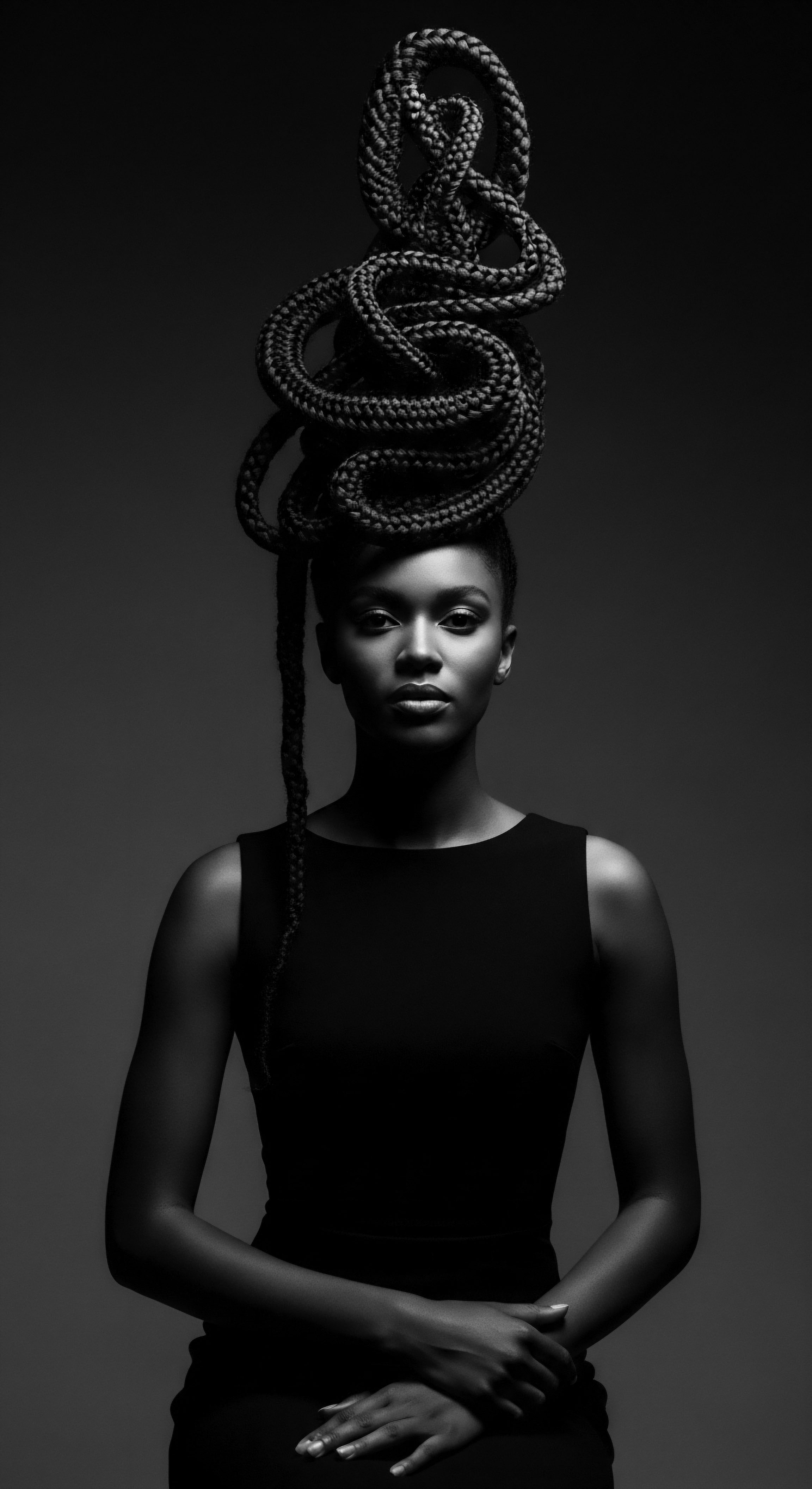
Braids as Language Threads of Identity
The artistry of braiding, for example, represents an ancient language. In various African cultures, intricate braiding patterns conveyed marital status, age, tribe, wealth, and even spiritual beliefs. During the period of enslavement, these styles became clandestine maps to freedom, food storage vessels, and hidden communication networks (Byrd, 2001, p. 28).
The knowledge of how to create these complex patterns was passed down through generations, often in hushed tones, transforming a mundane act of grooming into a powerful act of preservation. The tools were simple ❉ hands, combs crafted from bone or wood, and natural fibers to extend or adorn. This transmission of knowledge, often defying the harsh realities of oppression, speaks to the profound tenacity of hair heritage. These traditional methods are not just historical footnotes; they persist today, evolving while retaining their deep cultural resonance, affirming identity for countless individuals across the diaspora.
- Cornrows ❉ Historically used to denote tribal affiliation, social status, and as a practical style for labor, they also hid rice grains during enslavement for survival.
- Bantu Knots ❉ An ancient protective style originating from Southern Africa, serving both aesthetic and protective functions, preparing hair for soft, lasting curls.
- Locs ❉ Carried spiritual significance in many African and indigenous traditions, symbolizing connection to nature, wisdom, and a rejection of Eurocentric norms.

The Crucible of Conformity Legislated Aesthetics
The historical harm to hair heritage gained a new dimension when economic and social advancement became tied to hair conformity. Beyond overt laws, subtle regulations, workplace policies, and school dress codes functioned as legislative aesthetics, implicitly or explicitly demanding Eurocentric appearances. Black individuals were frequently denied opportunities if their hair was deemed “unprofessional” or “distracting”—terms that became thinly veiled code for natural, textured styles.
This created a crucible of conformity, forcing individuals to choose between their authentic hair heritage and economic stability or educational access. This societal pressure had devastating effects, leading to widespread use of chemical relaxers, which often caused scalp damage and hair loss, but were seen as a necessary compromise for survival.
Every braid, twist, coil, or loc tells a story, often one of survival, beauty, and deep ancestral connection.
Consider the myriad instances where students were sent home from school or employees terminated for wearing braids, twists, or locs. These were not isolated incidents; they were systemic manifestations of a deeper bias, upheld by institutions and, by extension, permitted within the existing legal framework. The absence of protective legislation created a vacuum where discrimination could flourish, compelling individuals to literally reshape their identity to fit a narrow, exclusionary mold. The question becomes ❉ how can a legal framework begin to dismantle these deeply ingrained biases that are not just about hair, but about the very notion of who belongs and how they must appear to belong?
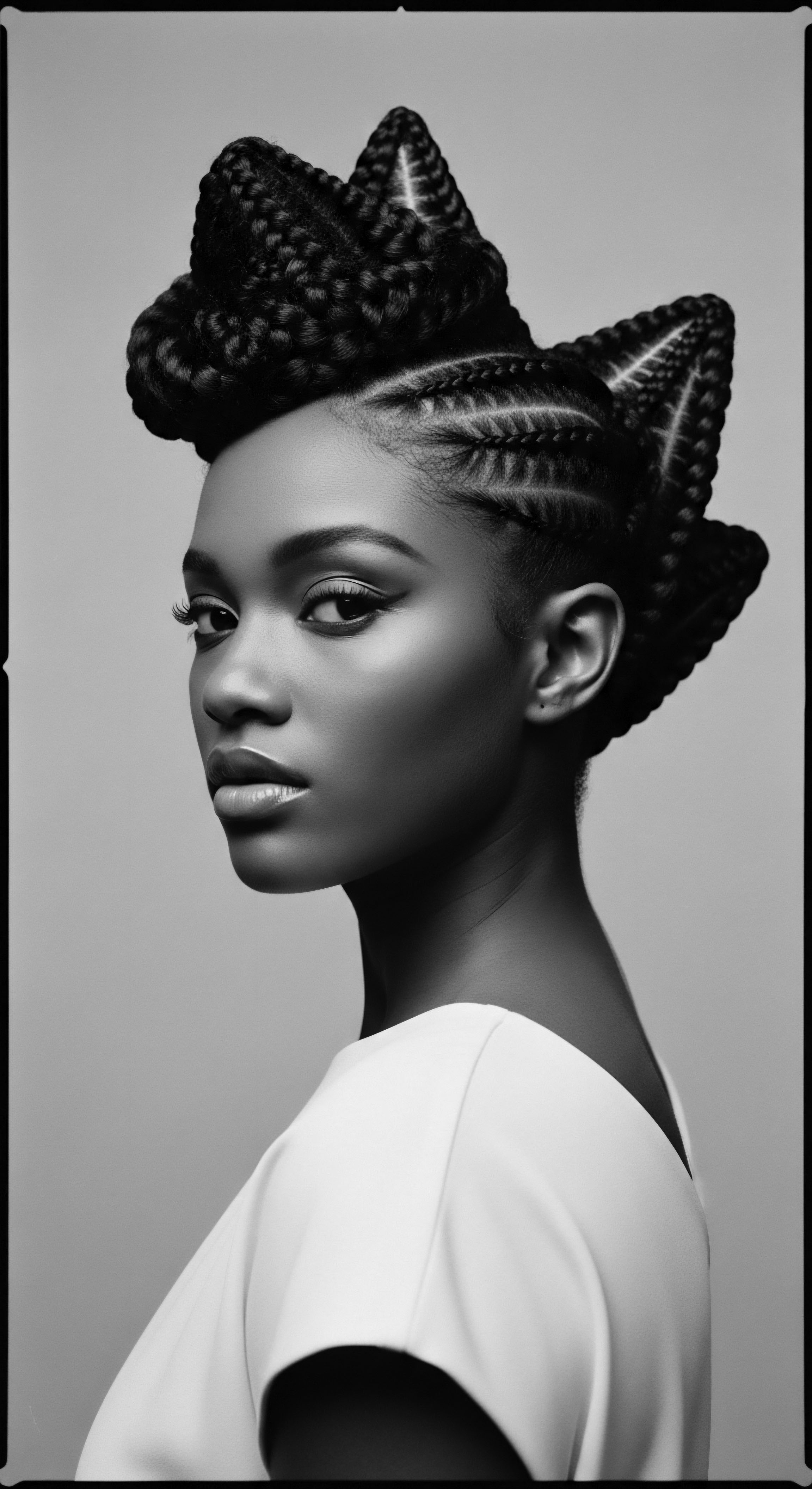
Relay
As we transition from the foundational truths of textured hair and the historical ritual of its styling, our attention shifts to the ongoing work of care, healing, and future affirmation. This is where the wisdom of ancestral practices meets the urgency of modern remedy, and where the possibility of legislative intervention truly comes into focus. To explore whether modern legislation can undo historical harm, we must consider its tangible impact on daily regimens, holistic wellness, and the very act of living freely with one’s hair heritage.
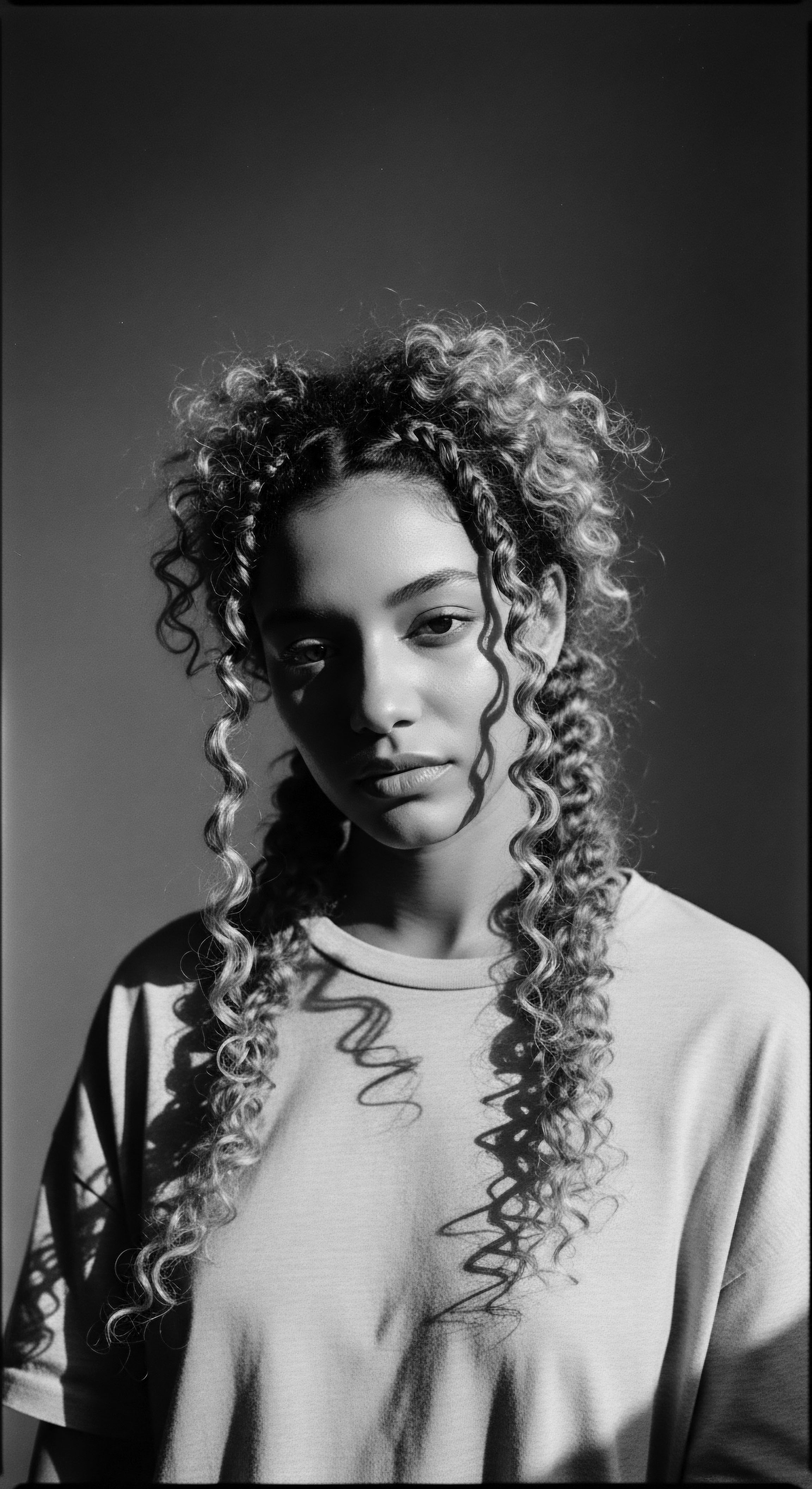
Nourishing the Coil Ancestral Regimens Renewed
Ancestral wisdom, often passed down orally, laid the groundwork for holistic hair care, seeing hair as an extension of overall well-being. This perspective recognized the symbiotic relationship between diet, internal balance, and hair vitality. Traditional regimens involved gentle cleansing with natural soaps or clays, deep conditioning with plant-derived butters and oils, and protective styling to guard against environmental elements.
The use of shea butter, coconut oil, aloe vera, and various herbal infusions were not merely cosmetic choices; they were intentional acts of nourishment, drawing from a deep understanding of natural properties and their synergistic effects on textured hair. These practices formed a counter-narrative to the later industrialization of beauty, which often prioritized harsh chemicals and quick fixes over genuine, sustained care.
Modern hair wellness advocates, many of whom are descendants of those who practiced these very rituals, are rekindling these ancestral methods. They are marrying ancient knowledge with contemporary scientific understanding, validating what our elders instinctively knew. For instance, the use of protective styles, once a means of practical maintenance and cultural expression, is now scientifically recognized for minimizing manipulation and retaining length.
The nightly ritual of wrapping hair in silk or satin, a practice rooted in preserving moisture and preventing friction, aligns perfectly with current dermatological recommendations for maintaining hair integrity. This revival of ancestral care practices is a potent form of self-reclamation, a quiet defiance against generations of imposed conformity.
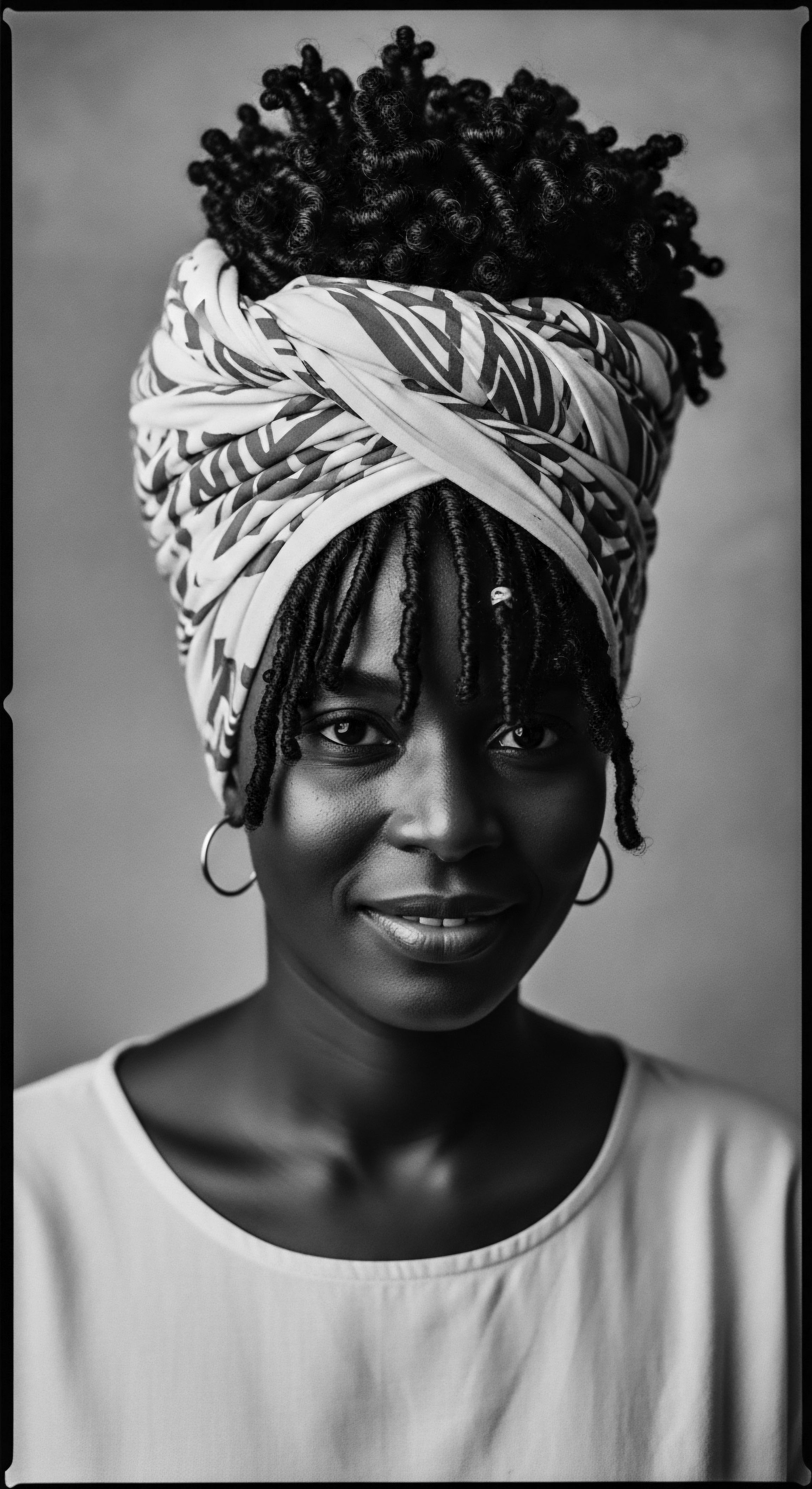
Statutes of Affirmation Legislative Paths to Healing
The legislative path to undoing historical harm gained significant ground with the enactment of laws like the CROWN Act (Creating a Respectful and Open World for Natural Hair) in various states and localities across the United States. This legislation directly prohibits discrimination based on hair texture and protective hairstyles associated with race, including braids, locs, twists, and knots. The CROWN Act acknowledges that hair discrimination is a form of racial discrimination.
A 2019 study by Dove and the CROWN Coalition, which catalyzed much of the legislative push, found that Black women were 1.5 times more likely to be sent home from the workplace or know of a Black woman who had been sent home from the workplace because of her hair (Dove CROWN Coalition, 2019). Such data underscored the urgent need for legal protection against systemic bias.
These laws do not erase the historical trauma of forced assimilation or the pain of past rejections. However, they dismantle the legal basis for such discrimination, providing a vital shield and affirming the right to cultural expression through hair. The CROWN Act, for example, represents a significant step towards legislative repair. It shifts the burden from the individual, who historically had to conform, to the institution, which now must adapt its policies to be inclusive.
This move is not merely about preventing future harm; it implicitly validates the heritage of textured hair, recognizing it as a protected characteristic tied to racial identity. While legislative measures alone cannot fully restore lost knowledge or heal intergenerational wounds, they create a legal environment where the rediscovery and celebration of hair heritage can flourish without fear of penalty.
Modern hair wellness advocates are rekindling ancestral methods, marrying ancient knowledge with contemporary scientific understanding.
| Legislative Type/Era Early Colonial/Slave Codes |
| Direct or Indirect Hair-Related Impact Forced assimilation, denial of cultural expression, implicit valorization of non-African features. |
| Potential for Heritage Restoration Minimal to none; actively worked against heritage preservation. |
| Legislative Type/Era Civil Rights Era Laws (General) |
| Direct or Indirect Hair-Related Impact Broad anti-discrimination, but hair not explicitly covered, leaving gaps for implicit bias. |
| Potential for Heritage Restoration Provided a foundation for future specific protections, but direct heritage restoration was not its primary aim. |
| Legislative Type/Era The CROWN Act (Modern) |
| Direct or Indirect Hair-Related Impact Explicitly prohibits discrimination based on hair texture and protective styles associated with race. |
| Potential for Heritage Restoration High potential; directly protects cultural expression, validates heritage, and reduces economic/social barriers for natural hair. |
| Legislative Type/Era Modern legislation offers a vital framework for affirming hair heritage, yet its success relies on continued cultural understanding. |
- The CROWN Act’s Reach ❉ Its adoption by numerous states and expanding federal consideration marks a widespread, if not yet universal, recognition of hair discrimination as racial discrimination.
- Beyond Legislation ❉ Laws provide a legal floor, but cultural education and awareness are necessary to address the deeper, internalized biases that persist.
- Restorative Justice Considerations ❉ Legislation could expand to support educational programs about textured hair heritage or fund initiatives for ancestral hair practices.

Relay Continued
The journey towards full recognition and respect for textured hair heritage continues beyond the initial legislative victories. While laws like the CROWN Act are monumental, they are but one aspect of a multidimensional repair. The complex interplay of legal frameworks, societal perception, and personal reclamation shapes the ongoing narrative. What further roles can legislative bodies play in not just preventing future harm, but actively mending the historical fissures?
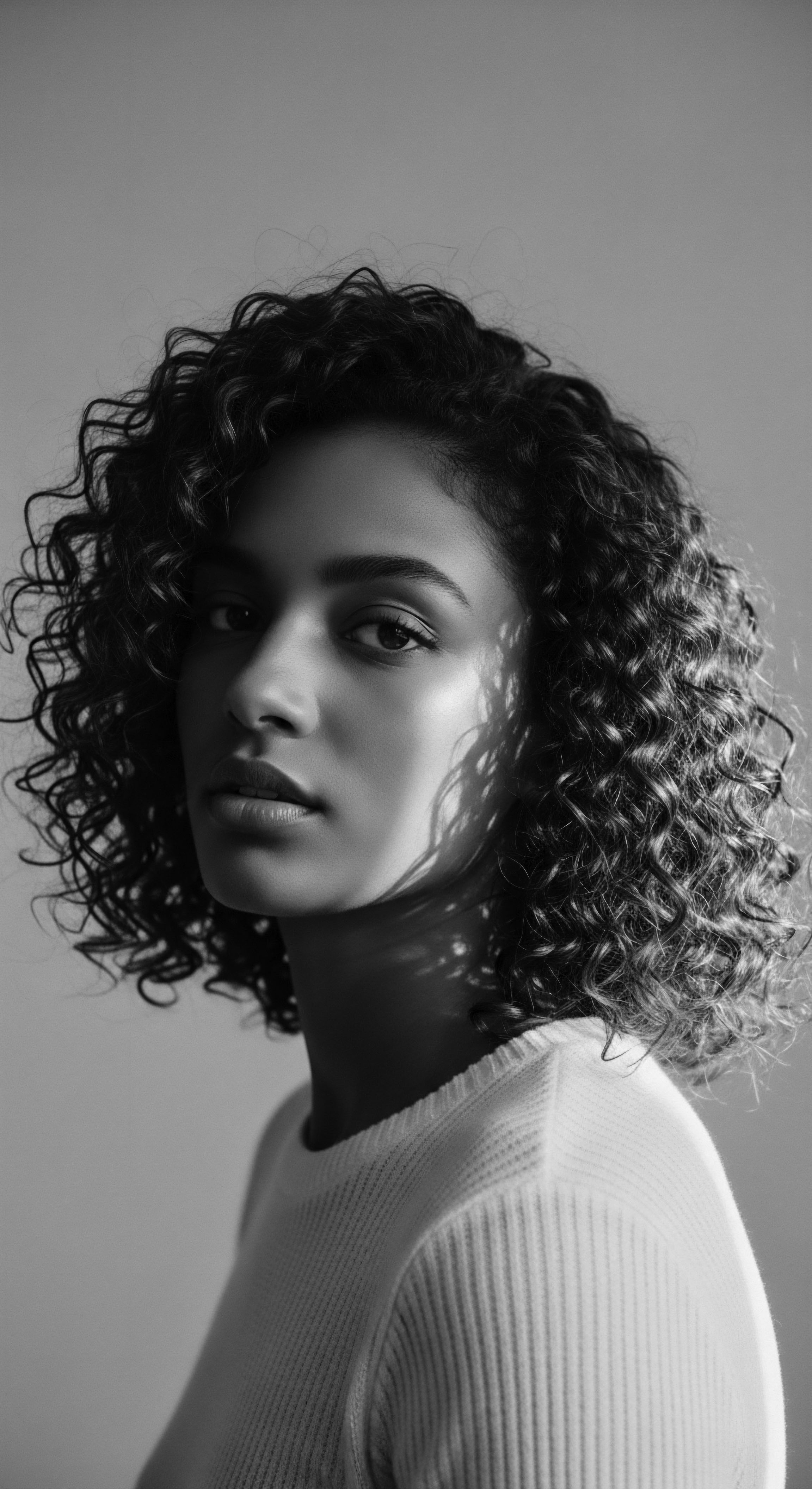
Beyond the Legal Threshold Affirming Identity
Consider the realm of public education. While individual schools may implement policies aligned with anti-discrimination laws, a broader legislative mandate could support comprehensive curricula that educate students about the diverse history, cultural significance, and scientific realities of textured hair. This moves beyond mere prevention of discrimination; it builds understanding and appreciation from an early age, working to dismantle biases before they take root.
Such an approach would affirm identity not just in the workplace, but in the formative years of youth, cultivating a generation that views textured hair with inherent respect and admiration. This educational shift complements legal protections by addressing the foundational societal attitudes that gave rise to hair-based discrimination in the first instance.
Moreover, legislation could be a catalyst for economic restitution within the hair care industry. For generations, products designed for textured hair were scarce, often harmful, or produced by companies that did not understand or respect the unique needs of this hair type. Laws could incentivize research and development into safer, more effective products, or provide grants and support for Black-owned businesses within the textured hair space. This moves beyond simply allowing natural hair; it actively cultivates the infrastructure necessary for its thriving, healthy existence, acknowledging the historical economic disenfranchisement experienced by communities of color in accessing quality hair care solutions.

Can Legislation Restore Lost Narratives?
The profound question persists ❉ can legislation restore the lost narratives, the ancestral wisdom that was forcibly suppressed or forgotten? A law can mandate protection, but it cannot directly transmit the intricate braiding techniques that were once passed from hand to hand across generations, nor can it instantaneously reconnect individuals to the spiritual reverence for hair that existed before colonization. Yet, by creating safe spaces for these practices to reappear, by removing the fear of penalty, legislation creates the conditions for restoration. When a child can wear their natural hair to school without fear of expulsion, when an adult can secure employment without having to chemically alter their strands, the ground becomes fertile for cultural memory to re-emerge.
The very act of challenging discriminatory practices through legal means also generates new narratives of resilience and advocacy. Individuals and collectives coming together to lobby for legislation like the CROWN Act are themselves writing new chapters in the story of textured hair heritage—chapters of activism, empowerment, and self-determination. These efforts, born from the pain of past harms, paradoxically become part of the healing process, demonstrating that collective action, supported by legal recognition, can indeed begin to mend the spirit of a community, one strand at a time. The legislative act, therefore, becomes less about simple undoing and more about enabling a powerful re-doing, a cultural resurgence rooted in affirmation.

Reflection
The enduring soul of a strand whispers tales of resilience, resistance, and reclamation. Asking if modern legislation can undo the historical harm to hair heritage is to acknowledge a wound that runs deep, a rupture not merely of aesthetics, but of identity, spirituality, and communal belonging. Legislation, in its purest form, offers a framework for justice; it can remove barriers, prohibit discrimination, and create environments where authentic self-expression is not just tolerated, but protected.
Laws like the CROWN Act are vital acknowledgments of past wrongs, providing a legal shield that allows textured hair to exist in public spaces without fear of penalty. They begin the long, difficult work of dismantling systemic biases woven into the very fabric of society.
Yet, the healing journey extends beyond the courtroom and legislative chambers. It calls for a deeper, more profound engagement with the living archives of our heritage. It means the joyful rediscovery of ancestral care rituals, the embrace of hair’s natural textures, and the creation of new narratives that celebrate its inherent beauty and power.
While legislation provides the essential guardrails for this resurgence, the true undoing of harm lies in the collective spirit of a people reclaiming their stories, piece by piece, strand by soulful strand. The task ahead requires not just legal vigilance, but a continuous outpouring of cultural affirmation, education, and love for the heritage that flows through every coil, every wave, every glorious pattern.
References
- Byrd, Ayana D. 2001. Hair Story ❉ Untangling the Roots of Black Hair in America. St. Martin’s Press.
- Dubois, W.E.B. 1903. The Souls of Black Folk. A.C. McClurg & Co.
- Dove CROWN Coalition. 2019. The CROWN Research Study.
- Hooks, Bell. 1992. Black Looks ❉ Race and Representation. South End Press.
- Thompson, Angela M. 2008. African American Women and the CROWN Act. Journal of Race, Gender, and Poverty.
- White, Shane. 1999. Stylin’ ❉ African American Expressive Culture from Its Beginnings to the Zoot Suit. Cornell University Press.
- Patton, Tracey O. 2006. African American Women and Hair ❉ Is It More Than Just Hair? Journal of Black Studies.
